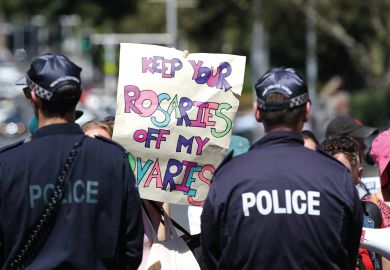Source: Getty
Worth their weight in gold? The Young Greens want small pay cuts for university managers to ensure living wage for all employees
Pay in higher education is more unequal than previously thought, according to a report, and only a “small handful” of universities know how much their outsourced staff are being paid.
The Fair Pay Campus Report, released on 17 October, is based on the responses of 113 universities to Freedom of Information requests made by the Young Greens, the Green Party’s youth and student branch.
It finds that in 2012, the average pay differential between the highest- and lowest-paid university workers was 18.6:1, with huge variations between universities, ranging from more than 60:1 at some institutions when apprentice pay is included to 10.5:1 at Soas, University of London.
This average is substantially higher than the 15.4:1 differential for 2008 uncovered by the government-commissioned Hutton review of fair pay in the public sector, which reported in 2010 and 2011.
The Hutton review found that vice-chancellors earned substantially more than leaders in the public sector, including four-star generals, permanent secretaries of the Civil Service, and NHS and local authority chief executives.
Unlike the Young Greens report, which takes into account the salaries of all employees in the 113 universities surveyed, the Hutton review only measured from the bottom of the Universities and Colleges Employers Association’s pay spine, which could explain the difference.
Duncan Exley, executive director of campaign group the Equality Trust, said that since the Hutton review reported, local authorities had “picked up the ball” on pay differentials, a trend supported by the 2011 Localism Act, which requires them to make their pay ratios public.
A report last year by the trust, Leading the Way on Fair Pay, found that more than 10 per cent of local authorities had set targets to reduce pay inequalities. But universities had not responded in the same way, Mr Exley continued, adding that the academy remained a “fairly unexamined corner” of the publicly funded sector, not subject to the same media pressure over high pay.
“People in local authorities have felt some pressure from local taxpayers to be seen to be doing the right thing,” he said, whereas universities “haven’t seen this as a big PR imperative”.
He said that questions remained over why vice-chancellors’ salaries were much higher than those of local authority chief executives when only the latter faced the risk “that you could have another Baby P incident on your watch”.
But the Equality Trust report shows universities are more in line with the public sector when it comes to the ratio between highest and median salaries: at universities the figure is 7.2:1, according to the Young Greens report, whereas at local authorities it is 7:1.
The Young Greens are using their study to argue that relatively small cuts to the pay packets at the top of the UK’s universities could allow all employees to be paid the living wage of £7.45 an hour (£8.55 in London), which campaigners say reflects the real cost of living and would boost staff performance.
In 2012, there were 11,641 university employees earning less than the living wage, while 1,633 staff took home more than £140,000 a year, according to the report.
But “only a small handful” of universities surveyed knew how many outsourced employees were paid below the living wage, it adds, suggesting that the institutions were moving “low pay problems out of sight and out of mind”.
A spokesman for Ucea said that heads of UK higher education institutions “continue to show restraint” in terms of their own pay.
Meanwhile, a spokeswoman for Universities UK added: “Salaries of university heads in the UK are comparable with those in competitor countries and also with heads of other organisations of a similar size.”
But a spokesman for the University and College Union said that the “widening gap between the big earners and the rest” explained why its members had voted to strike over this year’s 1 per cent pay offer from employers.
david.matthews@tsleducation.com
Highest-lowest salary ratios
| Institution | Ratio |
|---|---|
| * includes apprentices | |
| University of Surrey* | 75:1 |
| University of Exeter* | 61:1 |
| University of Bristol | 34.7:1 |
| University of Warwick | 34:1 |
| London Business School | 32.5:1 |
| University of Cambridge | 31.2:1 |
| Aberystwyth University | 29.8:1 |
| University of Nottingham | 29:1 |
| University of Birmingham | 28:1 |
| University of Bath | :1 |
Top employers of minimum-wage staff
| Institution | Ratio |
|---|---|
| Source: Young Greens, Fair Pay Campus Report | |
| University of Bath | 1,125 |
| University of Kent | 867 |
| Sheffield Hallam University | 848 |
| University of Lincoln | 708 |
| University of Manchester | 500 |
| University for the Creative Arts | 174 |
| University of Hertfordshire | 159 |
| University of Reading | 146 |
| Aberystwyth University | 100 |
| Bangor University | 67 |
Register to continue
Why register?
- Registration is free and only takes a moment
- Once registered, you can read 3 articles a month
- Sign up for our newsletter
Subscribe
Or subscribe for unlimited access to:
- Unlimited access to news, views, insights & reviews
- Digital editions
- Digital access to THE’s university and college rankings analysis
Already registered or a current subscriber? Login



